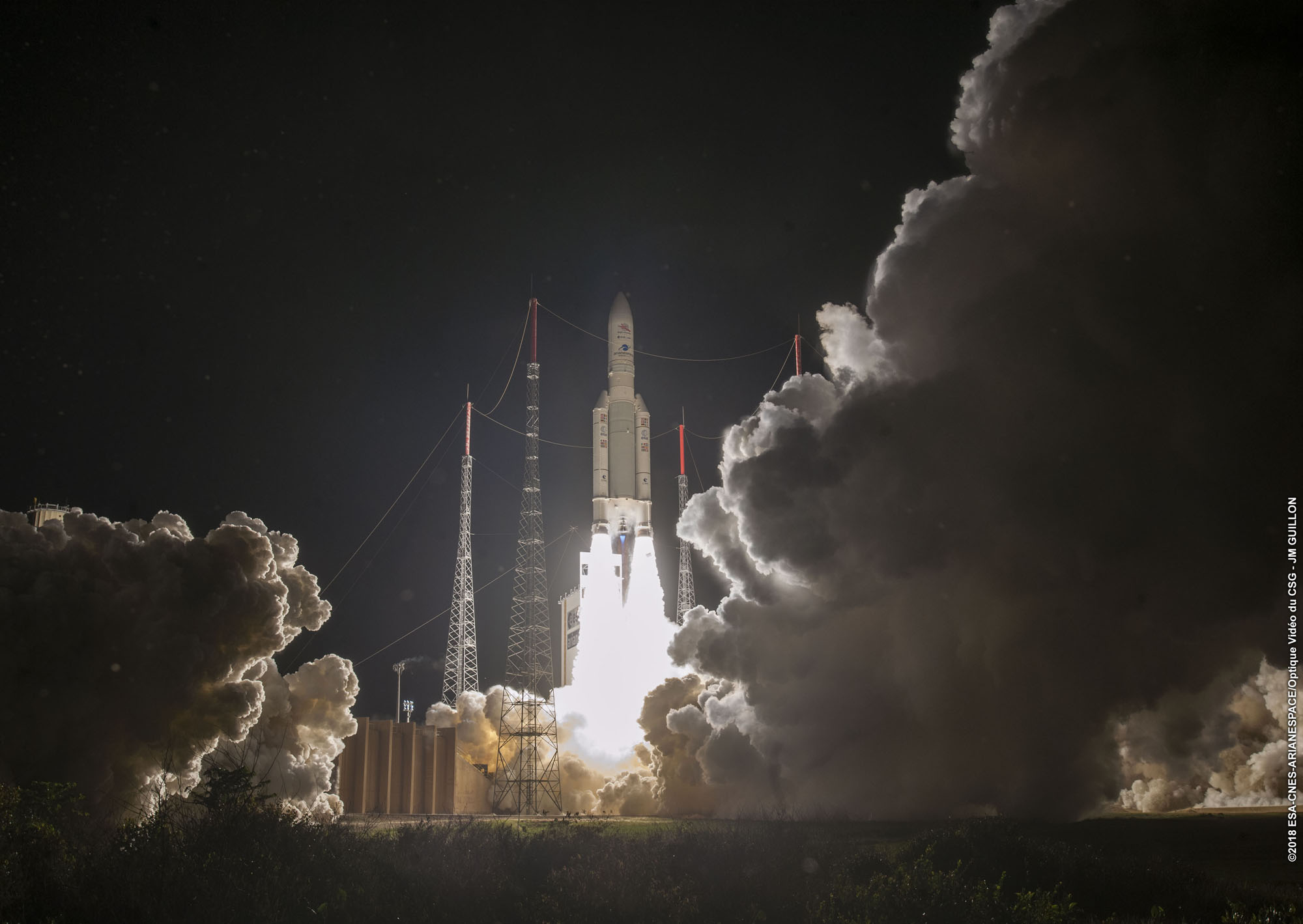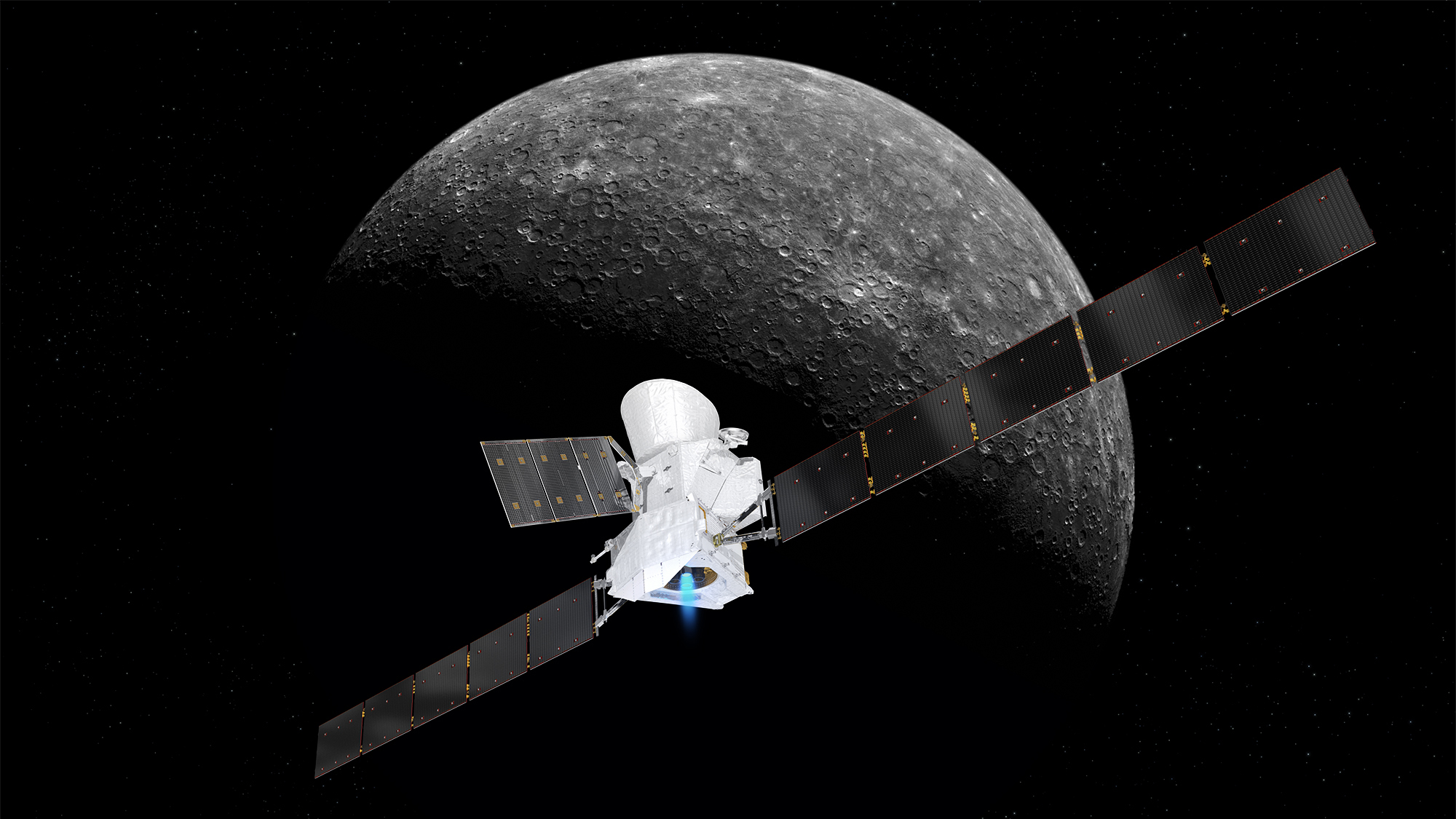BepiColombo Spacecraft Launch on 7-Year Trek to Mercury for Europe and Japan
A joint European-Japanese mission to the tiniest planet, Mercury, blasted off from French Guiana on its long journey tonight (Oct. 19, Oct. 20 GMT).
That mission, BepiColombo, will spend seven years cruising toward its target, where it will separate into two spacecraft and orbit Mercury for a year — or two, if the mission is extended. The measurements taken there could not only solve lingering mysteries about the innermost planet, but also about the formation of our solar system and neighboring ones. The whole mission cost the European Space Agency (ESA) and Japan Aerospace Exploration Agency (JAXA) almost $2 billion, according to press reports.
"It's a really great day," ESA Director General Jan Woerner said after the launch. "Let us go together to Mercury. Go, Bepi, go!"
An Arianespace Ariane 5 ECA rocket carrying the paired spacecraft launched at 9:45 p.m. EDT (0145 GMT, Oct. 20) from Kourou, French Guiana. About 26 minutes later, the spacecraft deployed, making contact with mission control about 40 minutes after launch, as scheduled. [Most Enduring Mysteries of Mercury]
Now, scientists have to wait seven long years before the two spacecraft that make up BepiColombo reach Mercury and separate to begin observations of the tiny, strange planet in December 2025.
But that's not to say they'll be twiddling their thumbs: BepiColombo has a few tasks to tackle, even as it makes the long trek to Mercury. As it travels, one instrument on board will be making the most precise measurements to date of Mercury's and Earth's orbits around the sun. Scientists will be able to use these measurements to pursue one of their favorite hobbies: trying to find any shortcomings in Einstein's theory of general relativity.
The joined spacecraft will also be making a series of flybys — one of Earth, two of Venus and six of Mercury. That's why the cruise will take so long, but it's necessary in order for BepiColombo to counter the huge gravitational tug of the sun and slip into a steady orbit around Mercury. So, along the way, scientists will use the flybys as opportunities to test many of the instruments on board — and potentially learn something new about our neighbors as the spacecraft travels.
Breaking space news, the latest updates on rocket launches, skywatching events and more!
Then finally, in December 2025, BepiColombo will split into its two components, the Mercury Planetary Orbiter built by the European Space Agency and the Mercury Magnetospheric Orbiter built by the Japan Aerospace Exploration Agency.
Those spacecraft will become the first to study Mercury since the only previous orbiter, NASA's MESSENGER, ended its mission in 2015 after four years at the tiny planet.
The two BepiColombo spacecraft will work in tandem for a year to study every aspect of Mercury, from the depths of its core out to the wispy, would-be atmosphere that surrounds the planet.
Email Meghan Bartels at mbartels@space.com or follow her @meghanbartels. Follow us @Spacedotcom and Facebook. Original article on Space.com.

Meghan is a senior writer at Space.com and has more than five years' experience as a science journalist based in New York City. She joined Space.com in July 2018, with previous writing published in outlets including Newsweek and Audubon. Meghan earned an MA in science journalism from New York University and a BA in classics from Georgetown University, and in her free time she enjoys reading and visiting museums. Follow her on Twitter at @meghanbartels.


